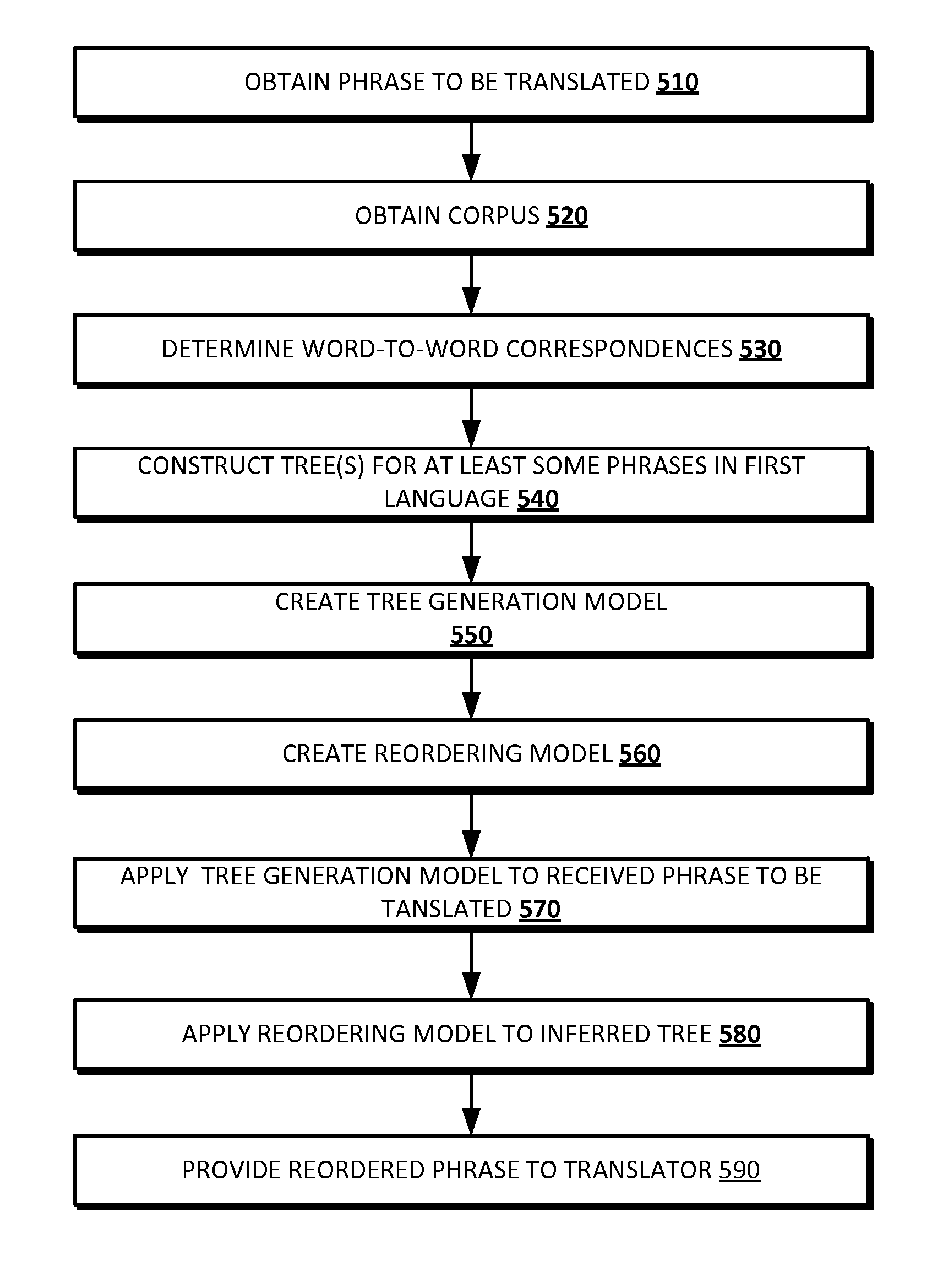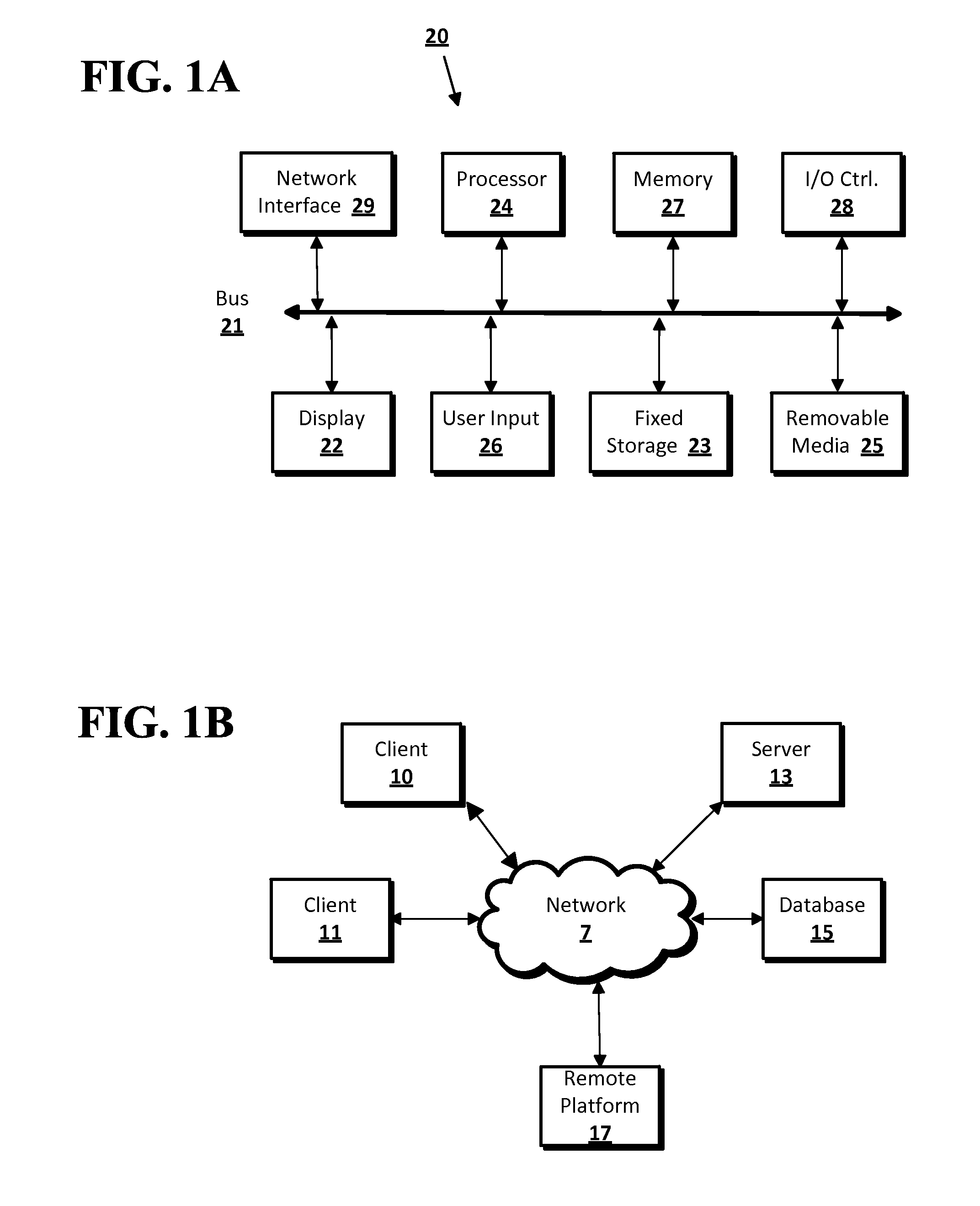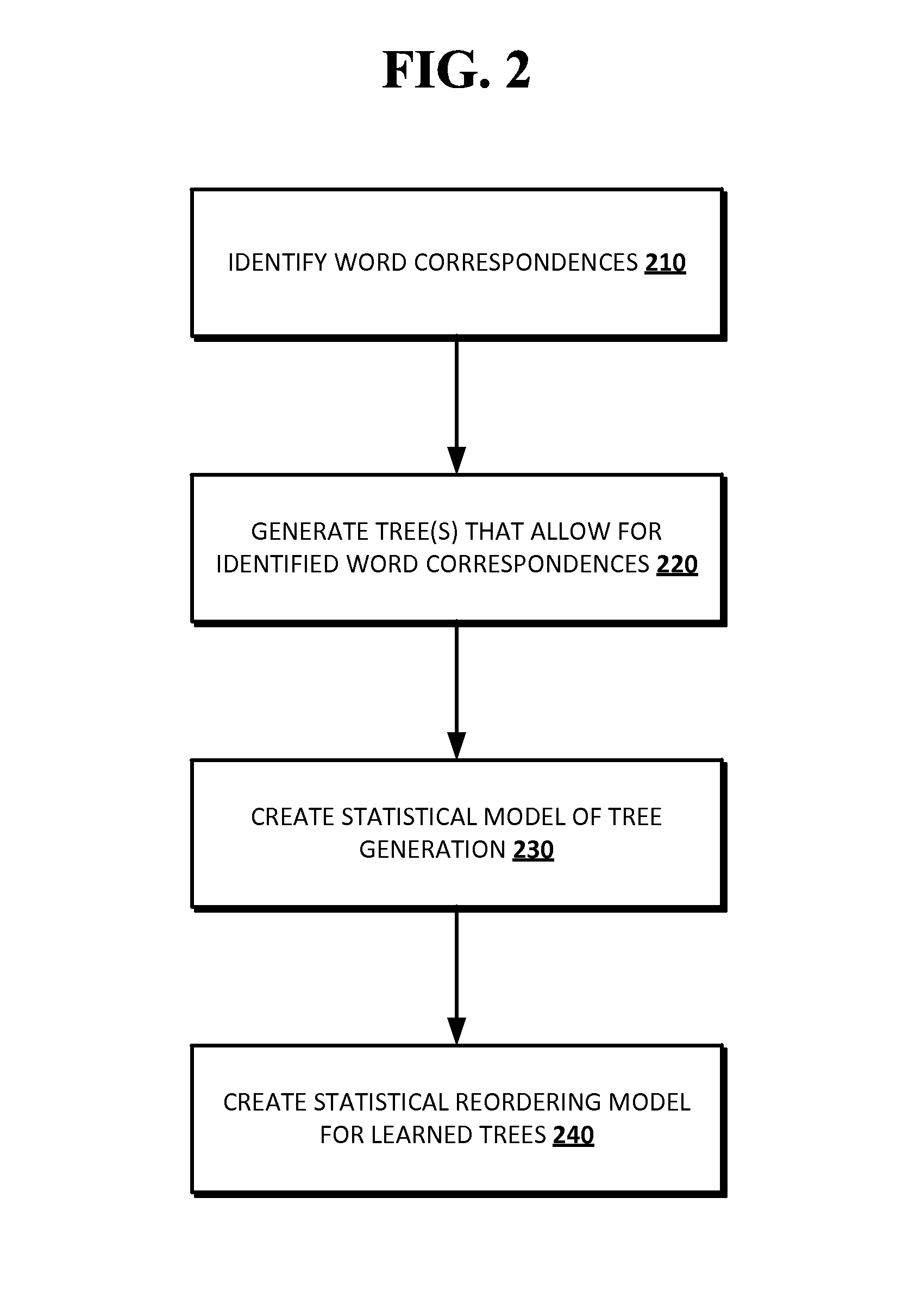Techniques for reordering words of sentences for improved translation between languages
a technology of reordering and sentences, applied in the field of reordering words of sentences for improving translation between languages, can solve the problems of affecting fluency and translation accuracy, affecting translation accuracy, and affecting translation accuracy
- Summary
- Abstract
- Description
- Claims
- Application Information
AI Technical Summary
Benefits of technology
Problems solved by technology
Method used
Image
Examples
Embodiment Construction
[0017]When translating between languages that differ substantially in word order, machine translation systems may benefit from techniques that permute source tokens, such as words in a source sentence to be translated into a target sentence in a different language, into an ordering suitable for the target language based on a syntactic parse of the input. Embodiments of the presently disclosed subject matter provide techniques for hierarchical pre-ordering over induced parses. The techniques may be generated or learned automatically from a parallel corpus of example sentence structure, without the need for a conventional supervised parser, such as one that is trained on a treebank.
[0018]Statistical machine translation models generally define weighted mappings from source to target sentences, where the source sentence is in a first source language and the target sentence is in a second, different, target language. Such models may include three general components: a target-side languag...
PUM
 Login to View More
Login to View More Abstract
Description
Claims
Application Information
 Login to View More
Login to View More - R&D
- Intellectual Property
- Life Sciences
- Materials
- Tech Scout
- Unparalleled Data Quality
- Higher Quality Content
- 60% Fewer Hallucinations
Browse by: Latest US Patents, China's latest patents, Technical Efficacy Thesaurus, Application Domain, Technology Topic, Popular Technical Reports.
© 2025 PatSnap. All rights reserved.Legal|Privacy policy|Modern Slavery Act Transparency Statement|Sitemap|About US| Contact US: help@patsnap.com



